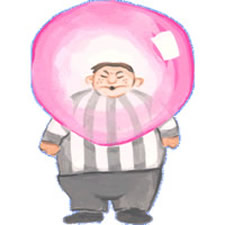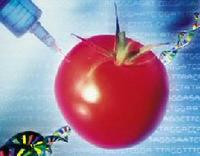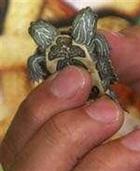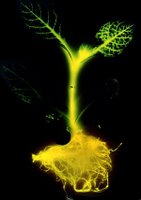Friday, December 28, 2012
Wednesday, November 23, 2011
Disposed paper cups killing bees

Disposed paper cups outside juice and coffee shops could be behind the India's Colony collapse Disaster (CCD) disappearing honey bee population that pollinate 80% of all crops.
The sugary residue in these paper cups attract honey bees who look at it as an alternative source of food instead of flowers.
A 'considerable population' of honey bees who take a dip into these cups never return. Researchers say these cups act as death traps for them.
A latest study published in the journal 'Current Science' says bees while competing to collect sugar, fall into cups containing residual beverage (coffee/tea/milk/juice) and are unable to fly, leading to their death.
Source: TOI
Image Source: Wiki
Monday, September 21, 2009
Bucket safer than Shower

A study by US researchers has shown that showerheads harbor vast colonies of bacteria that cling to the outlet zones, creating thin mats of microbes called biofilms, despite the chlorination of water and the force of water.
“Showering creates tiny particles that can be inhaled deep into the lungs — and if these particles contain pathogenic (disease-causing) bacteria, disease may result,” said Leah Feazel, a research team member at the University of Colorado, Boulder.
The study revealed significant levels of Mycobacterium avium, a bacteria known to cause lung disease similar to tuberculosis in persons who are susceptible or who have weakened immune systems, in nearly one-third of the showerheads.
Smoking, chronic lung disease and alcoholism are among risk factors that make people susceptible to lung infection with Mycobacterium avium which can cause chronic shallow cough, fever, fatigue and weight loss.
Wednesday, May 14, 2008
Eating Tilapia Fish can be Dangerous!
A WWF report has concluded that 100 gharials died in the Chambal river because of a toxin in a type of fish that the animals consumed.
The toxin was found in the tilapia fish, also consumed by people in Bengal and other states in the east.
The toxin was found in the dead gharials. It does not affect the fish as it is deposited above a layer of fat just below the skin…. This toxin had resulted in kidney failure of the gharials.
The fish is generally bred in large farms for consumption in Bengal, Tripura, Jharkhand and Bihar.
Thursday, February 14, 2008
Tuesday, February 05, 2008
How one ancestor helped turn our brown eyes BLUE ?

Scientists studying the genetics of eye colour have discovered that more than 99.5 per cent of blue-eyed people who volunteered to have their DNA analysed have the same tiny mutation in the gene OCA2 that disrupted melanin production in the iris and caused the eye colour to become blue.
The scientists are not sure when the mutation occurred but other evidence suggested it probably arose about 10,000 years ago when there was a rapid expansion of the human population in Europe as a result of the spread of agriculture from the Middle East.
"The mutations responsible for blue eye colour most likely originate from the north-west part of the Black Sea region, where the great agricultural migration of the northern part of Europe took place in the Neolithic periods about 6,000 to 10,000 years ago," the researchers report in the journal Human Genetics.
Variations in the colour of people's eyes can be explained by the amount of melanin in the iris, but blue-eyed individuals only have a small degree of variation in the amount of melanin in their eyes, he said.
"From this we can conclude that all blue-eyed individuals are linked to the same ancestor. They have all inherited the same switch at exactly the same spot in their DNA," said Professor Eiberg.
"All of them, apart from possibly one exception, had exactly the same DNA sequence in the region of the OCA2 gene. This to me indicates very strongly that there must have been a single, common ancestor of all these people," he said.
It is not known why blue eyes spread among the population of northern Europe and southern Russia. Explanations include the suggestions that the blue eye colour either offered some advantage in the long hours of daylight in the summer, or short hours of daylight in winter, or that the trait was deemed attractive and therefore advantageous in terms of sexual selection.
SEX TRAP
 Sex could be the latest weapon in mankind’s unrelenting fight against mosquitoes.
Sex could be the latest weapon in mankind’s unrelenting fight against mosquitoes. Researchers at a fledgling UK firm are laying a “copulation trap” for mosquitoes which will eventually drive down the population of these pesky insects.
The technique that the five-year-old Oxitec or Oxford Insect Technologies — a spin-off from the University of Oxford — is developing is based on an interesting strategy: release a swarm of genetically engineered male mosquitoes whose mating with the female insects in the wild will yield progeny that are doomed to die as larvae or pupae. Sustained release of such healthy but reproductively-compromised mosquitoes will eventually lead to a crash in their population.
Thursday, January 31, 2008
Why some can’t kick the butt ???
 Unsuccessful attempts to quit smoking a hundred times over might be explained not through lack of will, but proteins in the brain.
Unsuccessful attempts to quit smoking a hundred times over might be explained not through lack of will, but proteins in the brain. A genetic study of 14,000 people in Europe and the US has shown that variations in segments of two proteins that serve as gateways for nicotine entry into brain cells can predict the risk of addiction.
The study by US and Canadian scientists has shown that people with specific gene sequence coding for these proteins are more likely to be addicted to nicotine than people whose sequences are subtly different.
The two proteins called alpha-3 and alpha-5 form sites on brain cells which are activated during the process of addiction.
“Pharmaceutical companies can now study these targets and develop new drugs that could help people quit (smoking)”
Sunday, January 13, 2008
Elephant Poo Paper

When elephants travelling to Jaipur’s Amber Fort stop to answer nature’s call, the tourists on their backs may groan “what a waste of time”. But for one man, the breaks mean big bucks.
Vijendra Singh Shekhawat has struck gold by turning the dung left behind by the 200-odd elephants into paper.
Indians might be squeamish about paper made from “elephant poo” — as the stamp on the sheets declares — but Shekhawat has found that it is a hit abroad. The paper is exported to Germany and the UK.
Dung paper has increased Shekhawat’s income by 20 per cent.
The idea of turning elephant waste into paper dawned on Shekhawat while he was driving past Amber Fort one day. “I saw the dung spread across the road and noticed that there was a lot of fibre,” he said.
Shekhawat did not waste time and began experimenting immediately. But it took him eight or nine months to finally figure out the right proportions.
The process is the same as making any handmade paper.
After collecting the dung — only the best quality, which comes at Rs 2,000 a trolley, will do — it is cleaned in water tanks so that only the fibre remains.
Softer after being cooked, the fibre is dried and sorted. Then it is put into moulds on which muslin cloth is pressed to make paper.
“The colour of the dung varies depending on the fodder the elephant is eating,” Shekhawat said.
He has tried feeding the elephants different types of food to get different colours. But so far, the animals have stuck to their regular diet of sugarcane and jowar.
Elephant dung paper may sound like a bizarre idea in India, but in Sri Lanka and Thailand, it has been done.
Tuesday, November 13, 2007
Tuesday, September 25, 2007
Why do Onions make us cry ???

What actually happens:
NO STINK FABRIC
 Researchers at the Indian Institute of Technology, Delhi, have enlisted a natural ally to fight the foul smell that emanates from clothes after they have been worn. The fabric is first given an anti-microbial treatment to keep odour-causing germs at bay, which may fail to go even after washing. The material used for such treatment is normally of synthetic origin. Researchers have isolated a compound from neem seeds, which when blended with glycol, could foster anti-microbial properties lasting upto 25 washes.
Researchers at the Indian Institute of Technology, Delhi, have enlisted a natural ally to fight the foul smell that emanates from clothes after they have been worn. The fabric is first given an anti-microbial treatment to keep odour-causing germs at bay, which may fail to go even after washing. The material used for such treatment is normally of synthetic origin. Researchers have isolated a compound from neem seeds, which when blended with glycol, could foster anti-microbial properties lasting upto 25 washes.Saturday, September 08, 2007
Rasogolla: Food for your eyes!

Researchers at Calcutta’s Jadavapur University have succeeded in fortifying the rasogolla, the favourite dessert of Bengalis, with beta-carotene, a precursor to vitamin A.
Scientists from the department of food technology and biochemical engineering mixed carrot paste with cottage cheese which went into making the ping pong-like juicy balls. Among the various concentrations tried out, the one with 30 per cent carrot paste was found to possess the highest levels of beta-carotene.
Carrot rasogollas were found to be quite similar to the traditional ones in terms of moisture, sugar content, elasticity and cohesiveness, but had different fat and protein levels. The fortified sweet could be useful in fighting acute vitamin A deficiency, a major cause of childhood blindness and severe visual impairment in India.
Sunday, February 25, 2007
Vitamins make teens active

Teenagers who take a daily multivitamin supplement have a healthier diet and lifestyle than those who don’t take vitamins. A team led by a University of Minnesota researcher found that adolescents who took vitamins:
- had a lower rate of smoking, 29 vs 33 per cent;
- were less likely to be overweight, 31 vs 37 per cent.
Nobel Prize boosts life span
Friday, February 23, 2007
Why does your stomach growl when you are hungry?

Doctors call it “borborygmi”. Sounds somewhat like the sound you hear, isn’t it?
Growling in the stomach is a common phenomenon all of us would have experienced sometime or the other. “The stomach muscles are in constant peristaltic motion to digest the food ingested and letting it flow into the intestines. In general, increased flow within the system causes the stomach to growl”.
In the absence of food the stomach walls squeeze together in an attempt to mix and digest food, the gases and digestive juices slosh around in the empty organ creating the noise
Monday, January 08, 2007
MOLECULAR CONDOM
 University of Utah scientists have designed a “molecular condom” that women could use daily to prevent AIDS by vaginally inserting a liquid that would turn into a gel-like coating and then, when exposed to semen, return to liquid form and release an antiviral drug.
University of Utah scientists have designed a “molecular condom” that women could use daily to prevent AIDS by vaginally inserting a liquid that would turn into a gel-like coating and then, when exposed to semen, return to liquid form and release an antiviral drug. The molecular condom is part of a worldwide research effort to develop “microbicides” — drug-delivery systems such as gels, sponges or creams to prevent infection by HIV and other sexually transmitted diseases, according to an online report published in the Journal of Pharmaceutical Sciences. Microbicides will give women greater power to protect themselves from HIV, particularly in impoverished nations where AIDS is widespread or where conventional condoms are taboo.
Sunday, December 10, 2006
Meat Preservatives HEALTHY


Friday, December 01, 2006
CHOCOLATE

Fulfilling the dreams of chocaholics everywhere, US researchers have shown that a few squares of chocolate a day can almost halve the risk of heart attack death by decreasing the tendency of platelets to clot in narrow blood vessels. This is due to chemicals called flavonoids found in dark chocolates. The finding was presented at the American Heart Association’s annual scientific session in November.
Tuesday, November 21, 2006

In a new survey of noise levels of the New York City transit system, researchers at Columbia University found that exposure to noise levels in subways have the potential to exceed recommended guidelines of the World Health Organization (WHO). According to the research reported in the Journal of Urban Health, as little as 30 minutes of exposure to decibel levels measured in the New York City transit system per day has the potential to result in hearing loss. Noise exposure and noise-induced hearing loss is a global health problem of significant magnitude, especially in urban settings.
Tuesday, September 19, 2006
CHEW in STYLE

A chewing gum containing good bacteria that can destroy the bad bacteria causing tooth decay could be in the shops soon.
A new strain of lactobacillus called L. anti-caries, which binds to Strepptococcus mutans, the bacteria responsible for tooth decay.
S. mutans sticks to the surface of teeth, where it produces an aggressive acid that breaks down the enamel. The friendly bugs will make the S. mutans clump together, preventing them from becoming attached to the tooth surface.
Tests reveal that the chewing gum can reduce the amount of bacteria in the mouth 50 times!
Monday, July 24, 2006
Why do Smoking blacken Lips ???

Wednesday, July 19, 2006
Tomato Vaccine

Genetically modified tomatoes will soon be used to combat HIV and hepatitis B virus (HBV).
The primary objective is to make affordable vaccines that can be easily processed in the countries most affected by the killer viruses.
Researchers at the Siberian Institute of Plant Physiology and Biochemistry in Russia used a soil bacterium to ‘shuttle’ a synthetic combination of HIV and HBV DNA fragments into tomato plants, which in turn manufacture proteins.
When they are eaten, these proteins help the body create antibodies against the viruses.
Tuesday, May 16, 2006


Biogas train

Sunday, March 19, 2006

Don Quixote And Sancho
 Fungus fights malaria
Fungus fights malariaSaturday, March 11, 2006
GLOWING PLANTS

Some people like to talk to their plants. Now, students at Singapore Polytechnic say they have created a plant that can commmunicate with people — by glowing when it needs water.
The students said today that they have genetically modified a plant using a green fluorescent marker gene from jellyfish, so that it “lights up” when it is stressed as a result of dehydration.
The light is hard to detect with the naked eye but can be seen using an optical sensor developed in collaboration with students at Singapore’s Nanyang Technological University.
Thursday, February 23, 2006
Kissing leads to meningitis

Intimate kissing with multiple partners, attending college, and a history of preceding illness are independent risk factors for meningococcal disease in adolescents, a new research shows. However, religious observance and meningococcal vaccination are tied to reduced risks, according to a report in the British Medical Journal. Meningococcal disease — a bacterial infection of the fluid within the tissues surrounding the brain and spinal cord — is largely a disease affecting children younger than five years, although in recent years both the US and UK have seen rising rates among teens, say researchers at the University of London.
Friday, February 17, 2006

A fatal cancer afflicting Tasmanian devils passes from one of the small marsupials to another when they bite each other, rather than being transmitted via a virus, according to a team of Australian researchers. The study, reported in the journal Nature, is the first documented instance of trauma-transmitted cancer.







